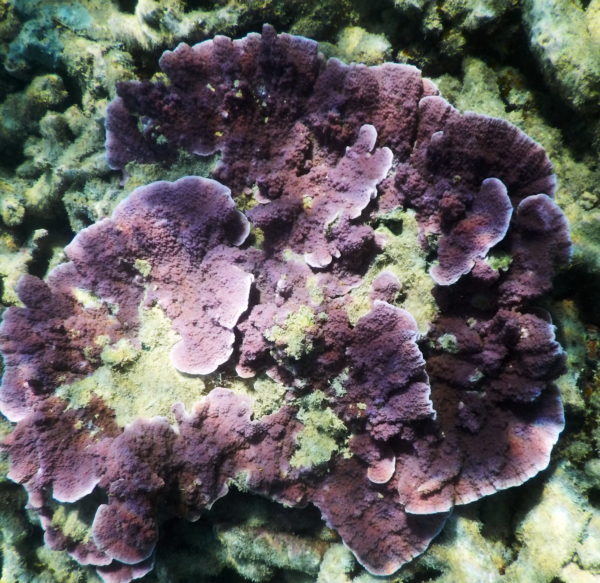Published in the Ocean Watch column, Honolulu Star-Advertiser © Susan Scott
July 16, 2016
A reader emailed that he has “coral empathy fatigue” from so many reports about bleaching. It happens. A person can take only so much bad news.
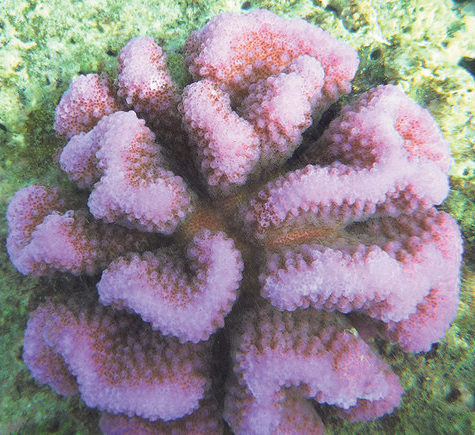 A healthy, budding coral branch is
A healthy, budding coral branch is
shown in Bait Reef, Queensland, Australia.
©2016 Susan Scott
This week I had coral biology fatigue because another reader asked me to explain how heat stress causes embedded algae to damage corals’ natural sunscreen. While researching this biochemistry topic, I wished I had a second computer monitor, one to read the studies and the other to look up molecular biology terms. But slow-going as it was, the answer renewed my energy and my empathy.
Reef-building corals, as we know, host plants in their tissues. The corals get food from the plants, called dinoflagellates, and the plants get a place to hang their hats or, in this case, their swim fins. All dinoflagellates have two wiggly structures that propel them through the water.
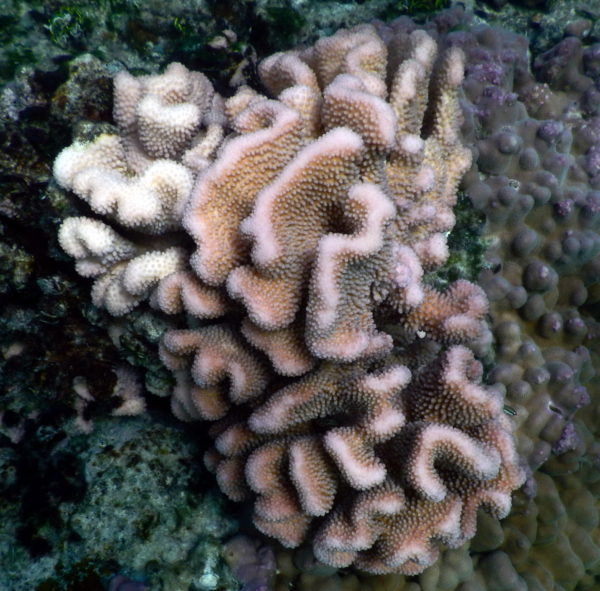 One-quarter coral head bleached, three-quarters normal.
One-quarter coral head bleached, three-quarters normal.
Kailua Bay, Oahu, Hawaii.
©2016 Susan Scott
Baby corals inherit dinos from a parent or get them on the run as both organisms drift through the water looking for a good place to settle down. To accommodate their plant partners, reef corals must set up housekeeping under the tropical sun in clear, shallow water. Such conditions would normally fry, with UV radiation, immobile animals. Corals survive, however, because they make their own sunscreen.
Researchers report that several chemicals in the sunscreens used by people can damage reef corals, but an elegant solution is in the works. Australian scientists are working with a cosmetic company to manufacture corals’ natural sunscreen for human use.
But back to when algae go bad. Embedded dinos multiply when the coral settles down. Corals can control the number of algae in their tissues, but they can’t control how much oxygen each plant produces. Higher-than-normal water temperatures cause some algae species to photosynthesize like crazy, making oxygen four to eight times faster than its coral host can use.
At this rate, oxygen molecules change chemically to a form called oxygen radicals, which interfere with the production of corals’ sunscreen. Radical indeed. Without UV protection the animals will die.
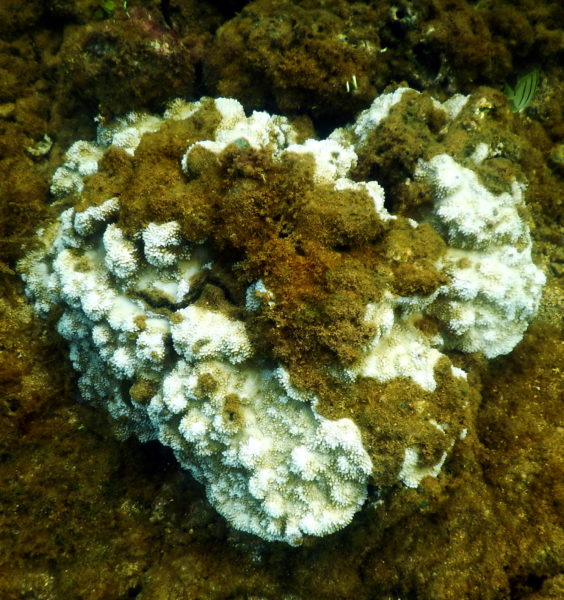 Bleached Coral, North Shore, Oahu, Hawaii.
Bleached Coral, North Shore, Oahu, Hawaii.
©2016 Susan Scott
Coral bodies can’t simply spit out their over-excited tenants. Most often the corals shed the inner layer of stomach cells that contain the algae. When (if) the water cools, the coral bodies that survived catch dinos swimming past, deposit them in newly grown stomach linings and carry on.
Best case: The corals get a new plant species that’s more heat-tolerant. (This is the subject of much current research.)
I hope this answers my reader’s question. It didn’t answer mine. My sources say that coral bodies are transparent and the dinoflagellates color them brown. Why then are some reef corals green, pink, purple and blue?
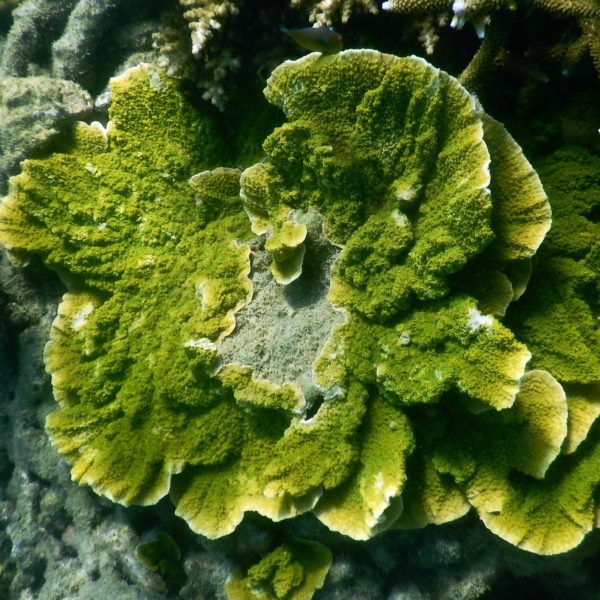 Two corals of the same species in different colors
Two corals of the same species in different colors
In the journal Molecular Ecology, I found a 2015 paper titled “Fluorescent protein-mediated colour polymorphism in reef corals; multicopy genes extend the adaptation/acclimation potential to variable light environments.” This article might or might not answer my question.
I’ll have to buy another computer monitor to find out.
